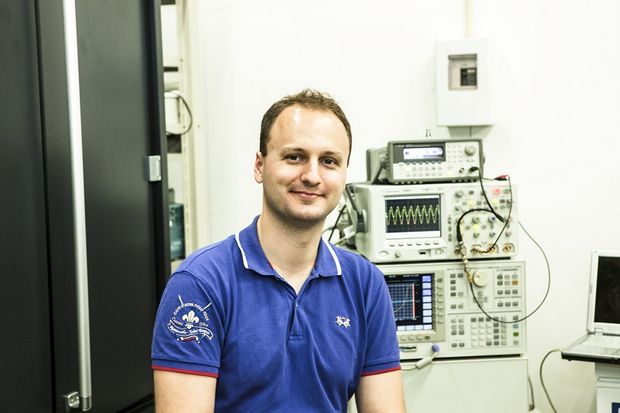Flower-shaped robots made out of soft materials have the ability to catch quick-moving flies that have landed on them.

An international team of JKU researchers is continuing to develop their vision for robots made out of soft materials. A new article in the journal "Communications Materials" demonstrates just how these kinds of soft machines react using weak magnetic fields to move very quickly, even grabbing a quick-moving fly that has landed on it.
When we imagine a moving machine, such as a robot, we picture something largely made out of hard materials. For years, Martin Kaltenbrunner and his team of researchers at the JKU’s Department of Soft Matter Physics and the "LIT Soft Materials Lab" have been working to build a soft materials-based system. When creating these kinds of systems, there is always a basic underlying idea to create conducive conditions that support close robot-human interaction in the future, and without the solid machine physically harming humans.
Stable yet Stretchable and Flexible
In June, scientists presented a new approach for electromagnetic motors. Instead of copper wire and iron, elastic materials and liquid metal now form the basic ingredients for the so-called actuator. Scientists also recently introduced a new type of bio-gel in a journal article in "Nature Materials" which is elastic, flexible, and stable enough to be combined with electronic components in order to create a kind of ‘soft robot’.
A team led by Kaltenbrunner and Denys Makarov (Helmholtz Center Dresden-Rossendorf) is now taking the development of these kinds of machines one step further. The two researchers noted that before, a drawback was that these wirelessly designed soft robots were only able to change shape very slowly. Their new idea is based on using the flexible plastic polydimethylsiloxane and mixing in magnetic microparticles such as an alloy of neodymium, iron and boron.
The researchers gave their small, soft robots different shapes. Depending on the shape, where the microparticles were placed, and on the thickness of the materials used, the robots were able to move in different ways when exposed to a changing magnetic field in their environment. These actuators are just a few micrometers thin and a few micrograms in weight so they require little energy to move. In addition, the components can repeat the movements millions of times without any changes.
Hover, Swim, Catch Flies
By influencing and changing the magnetic field, Kaltenbrunner and his colleagues have managed to build tiny robots that could hover, swim and - in the broadest sense - even walk. They also showed that in just a few milliseconds, their flower-shaped robots could catch a fly that had landed on it.
Scientists say this now paves the way to new opportunities to develop soft robots that also move very quickly. The long-term idea is to primarily produce more complex mini-machines that could, for example, help unblock blood vessels in the human body. In order to do this, the materials used would have to be biodegradable and easy to control.








